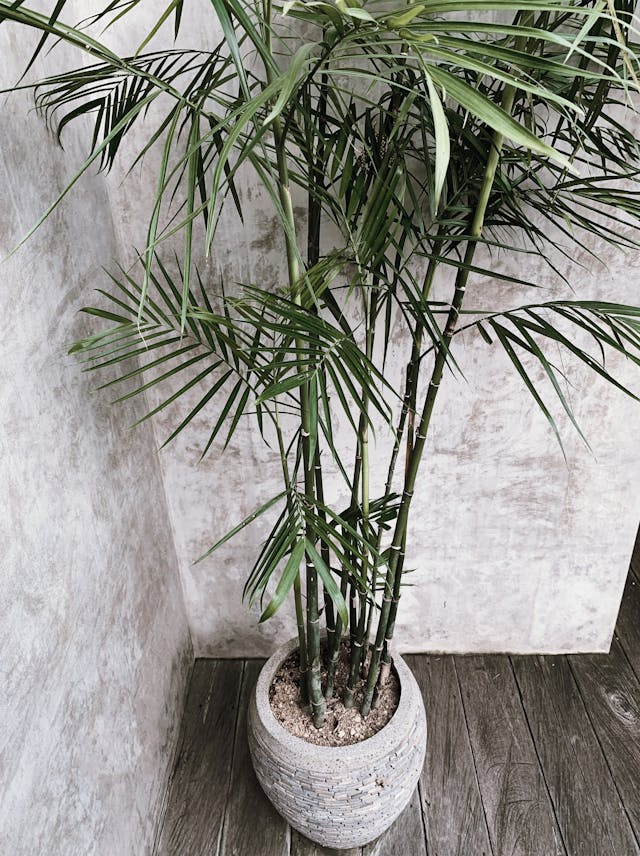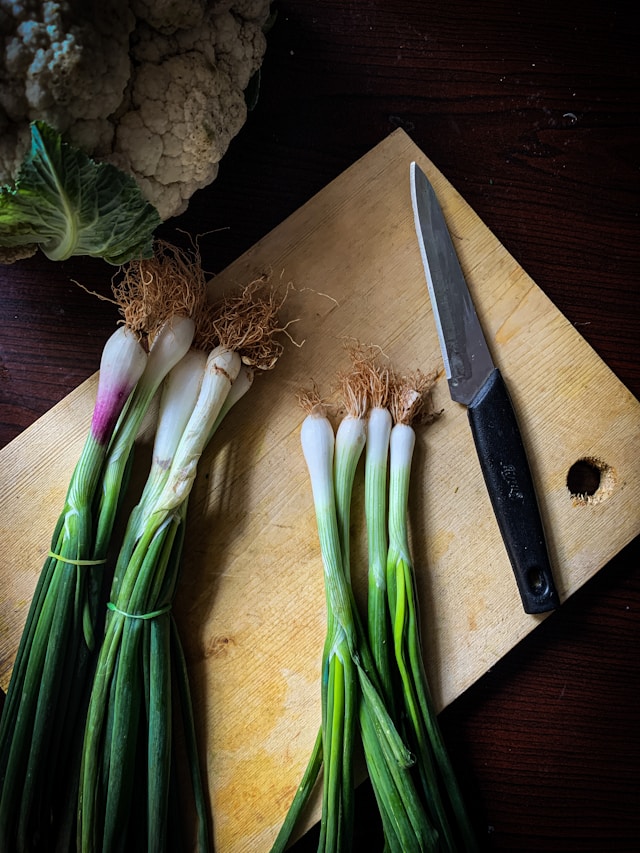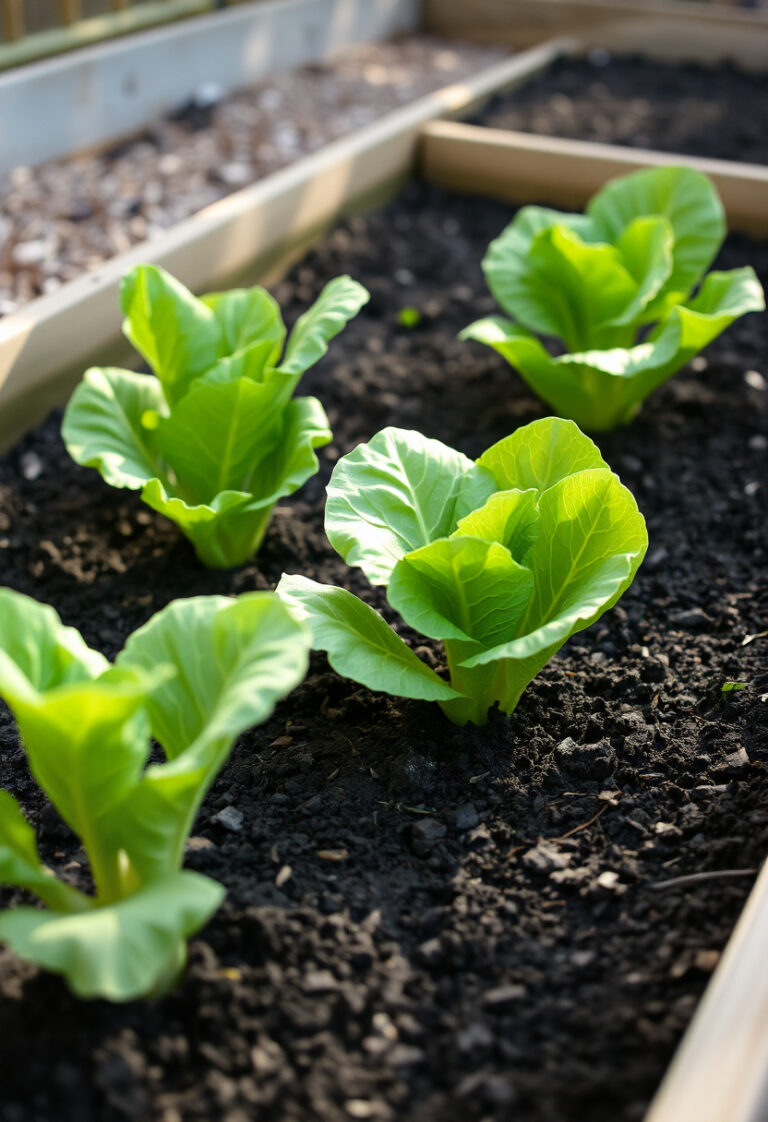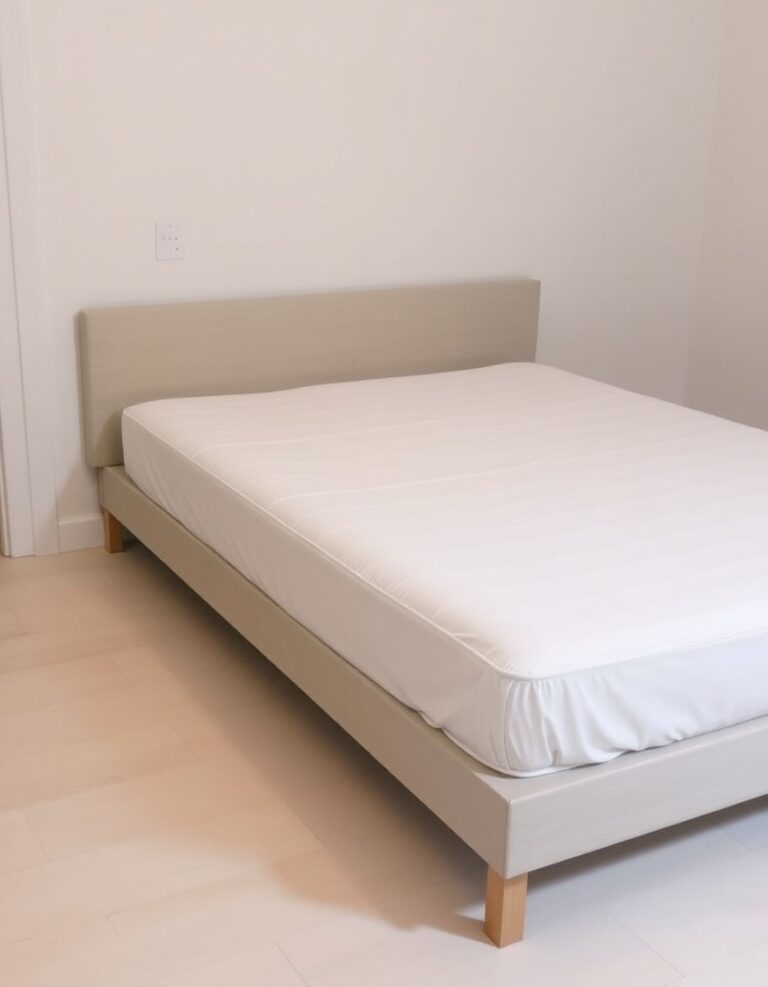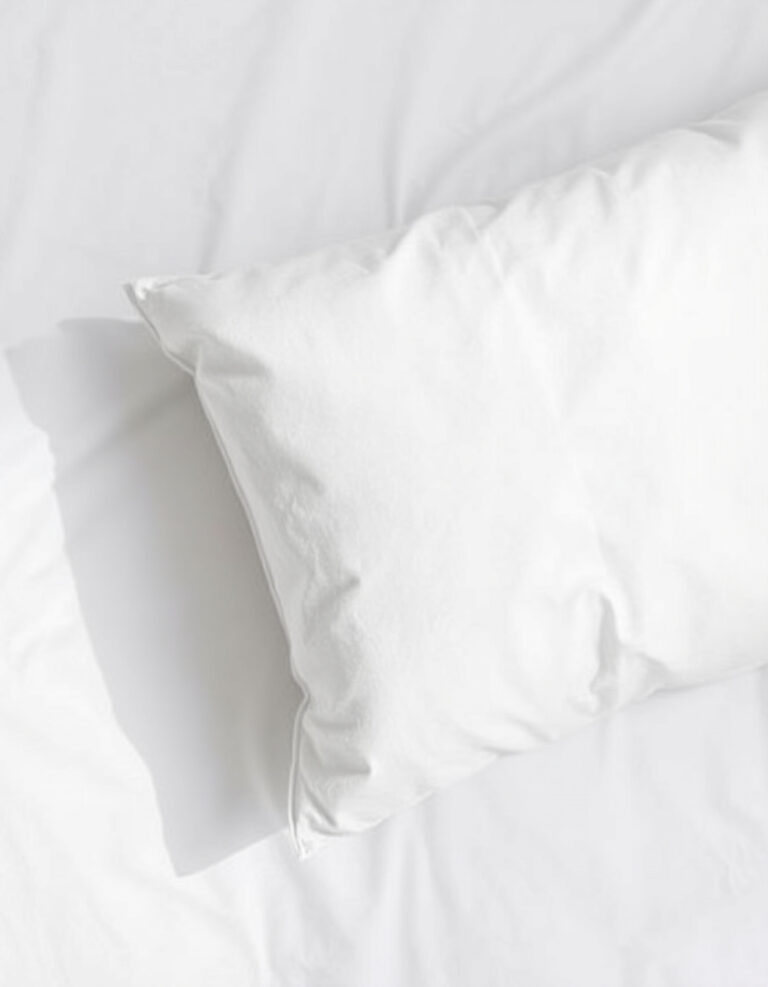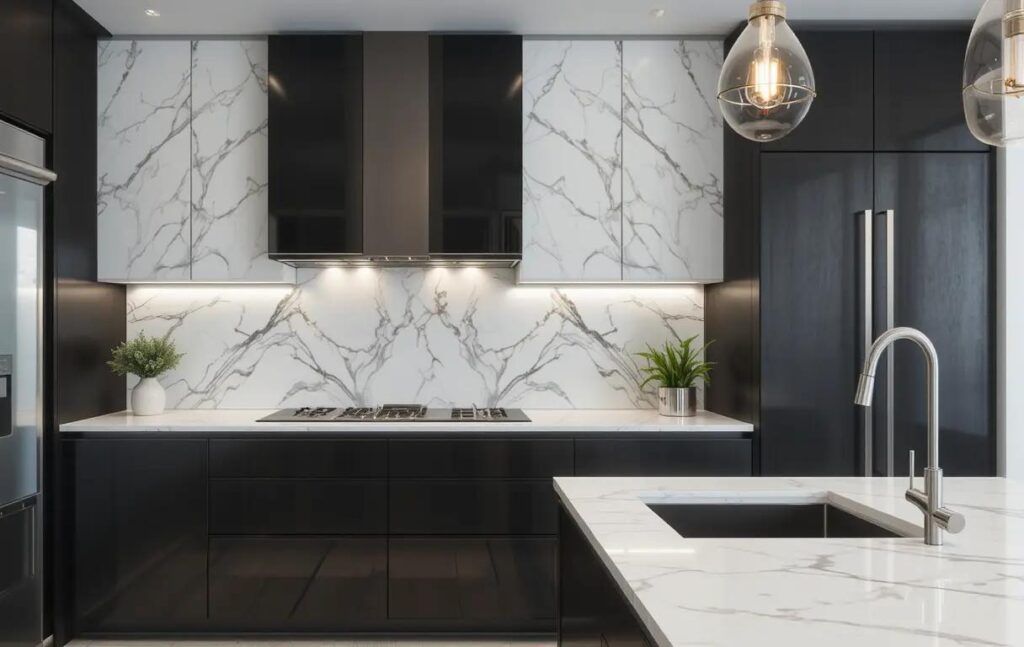
A well-designed kitchen backsplash does more than just protect your walls from splashes and spills. It serves as a focal point, tying together your kitchen’s design elements while expressing your personal style. Whether you’re planning a complete renovation or simply looking to refresh your space, choosing the right backsplash can dramatically elevate your kitchen’s appearance.
From classic subway tiles to bold patterns, today’s kitchen backsplash options offer many possibilities. Let’s explore 18 inspiring ideas that blend functionality with beautiful aesthetics.
1. Classic White Subway Tiles
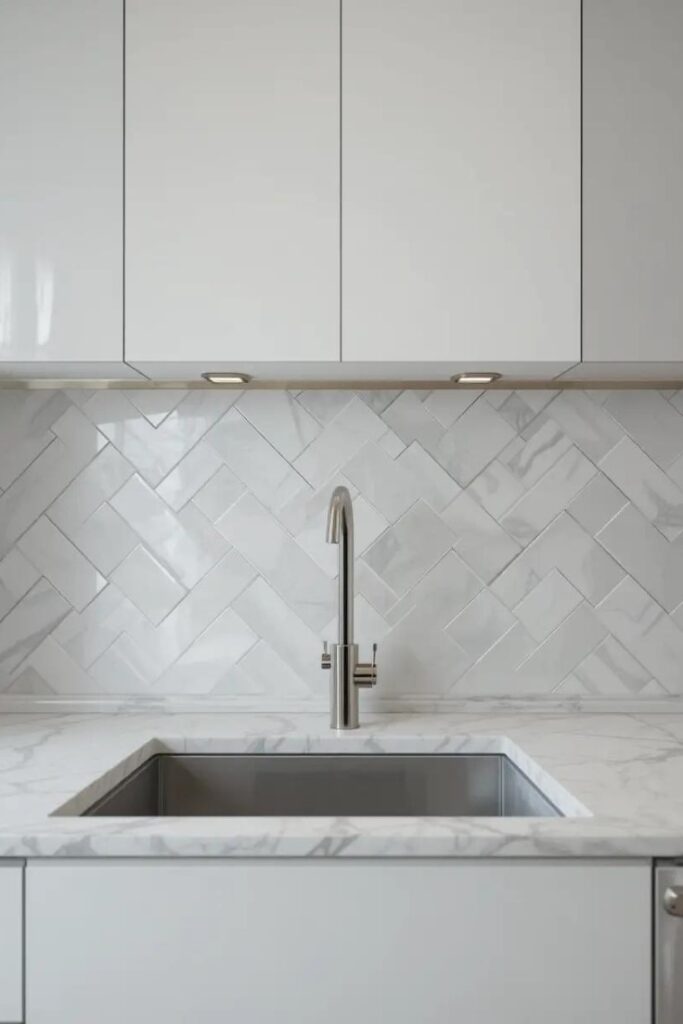
White subway tiles remain a popular kitchen backsplash choice. Their clean, rectangular shape creates a classic appeal that works with virtually any kitchen style. The glossy finish reflects light, making your kitchen appear brighter and more spacious.
For added interest, consider varying the layout pattern (herringbone or vertical stack) or using contrasting grout colors. This affordable option offers incredible versatility while maintaining a fresh and clean aesthetic.
2. Marble Elegance
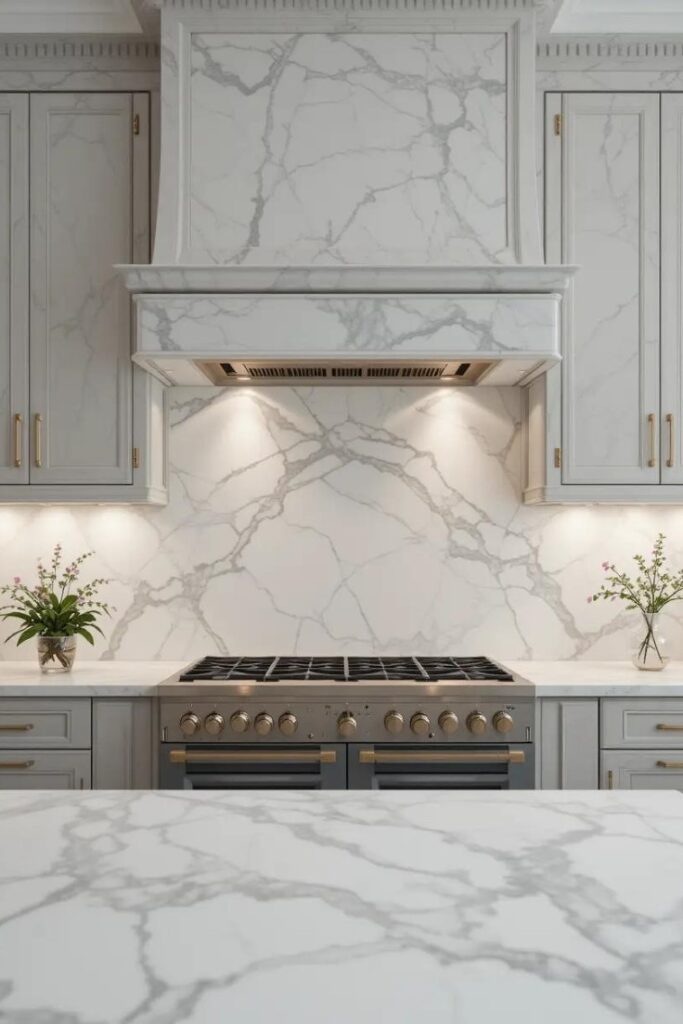
Marble backsplashes bring natural luxury to your kitchen. With distinctive veining patterns, marble creates a sophisticated focal point. Consider Carrara or Calacatta marble for subtle gray veining, or go bold with dramatic contrasting colors.
For budget-conscious renovators, marble-look porcelain tiles provide the aesthetic without the maintenance concerns. This kitchen backsplash option pairs beautifully with both modern and traditional cabinetry.
3. Geometric Patterned Tiles

Add visual interest to your kitchen backsplash with geometric patterned tiles. Hexagons, diamonds, and arabesque shapes create dynamic movement that draws the eye. These distinctive patterns work particularly well when kept to a simple color palette.
For maximum impact, install a geometric backsplash behind your range or sink area as a feature wall, complemented by simpler tiles throughout the rest of the kitchen.
4. Glass Tile Brilliance
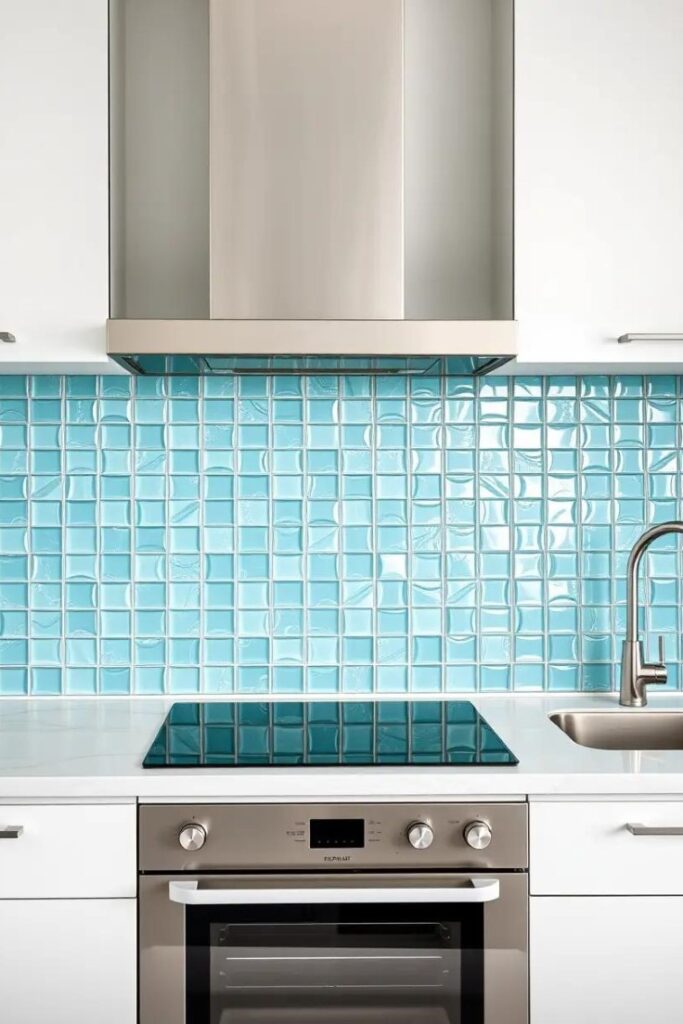
Glass tiles bring reflective qualities and depth to your kitchen backsplash, catching and playing with light throughout the day. Available in countless colors and sizes, glass tiles can create subtle texture or bold statements.
Their non-porous surface makes glass an exceptionally practical backsplash choice that resists stains and is easy to clean.
5. Exposed Brick
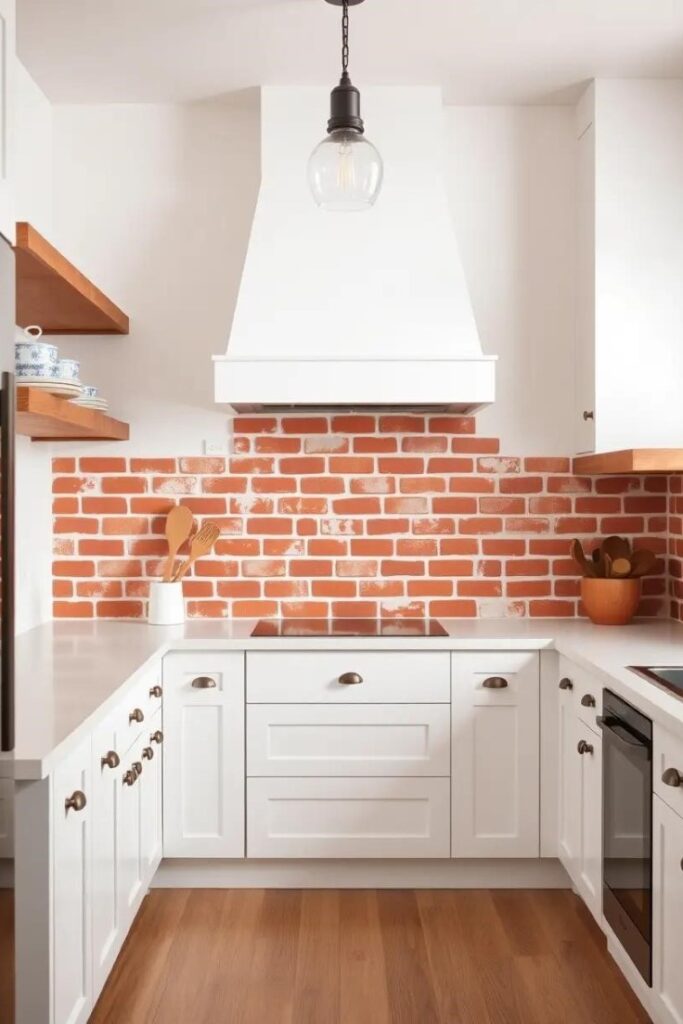
For industrial or farmhouse-style kitchens, an exposed brick backsplash adds warmth and character. The textural elements and color variations create a rustic appeal that contrasts beautifully with sleek countertops.
If your kitchen doesn’t have existing exposed brick, consider thin brick veneer tiles. Seal your brick kitchen backsplash thoroughly to protect against moisture and cooking splatters.
6. Stainless Steel Modernity
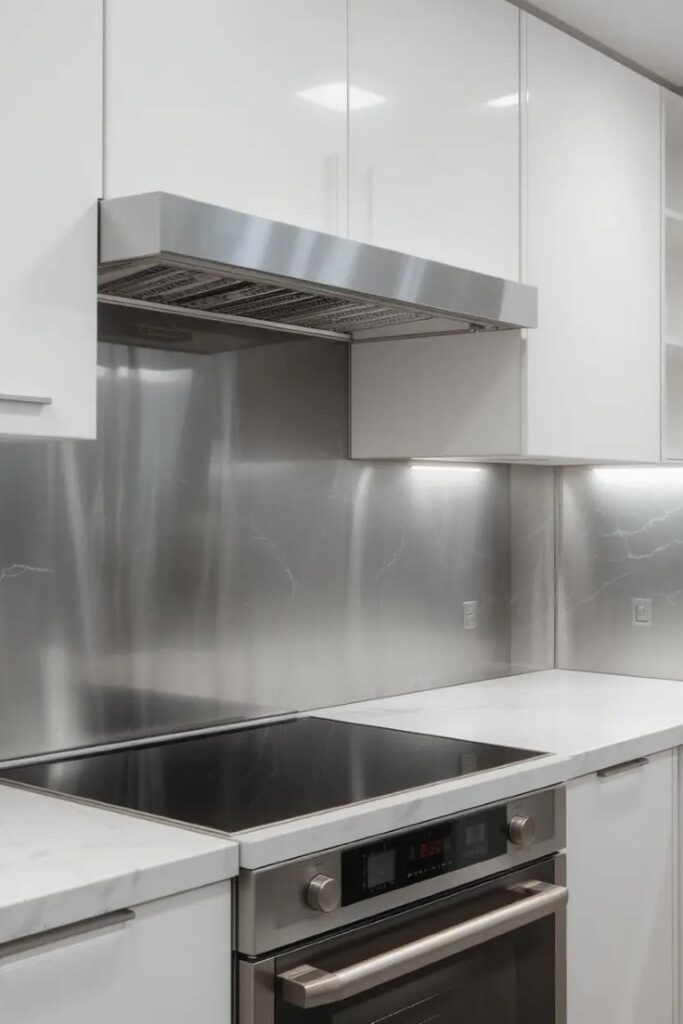
Stainless steel backsplashes offer a professional look that’s both durable and easy to maintain. Available in sheets, tiles, or panels, stainless steel creates a seamless appearance that complements other metal elements in your kitchen.
This kitchen backsplash material is heat-resistant and antimicrobial, making it a great choice for behind cooking areas. Choose from various finishes—brushed, patterned, or quilted—to suit your design preferences.
7. Peel-and-Stick Innovation
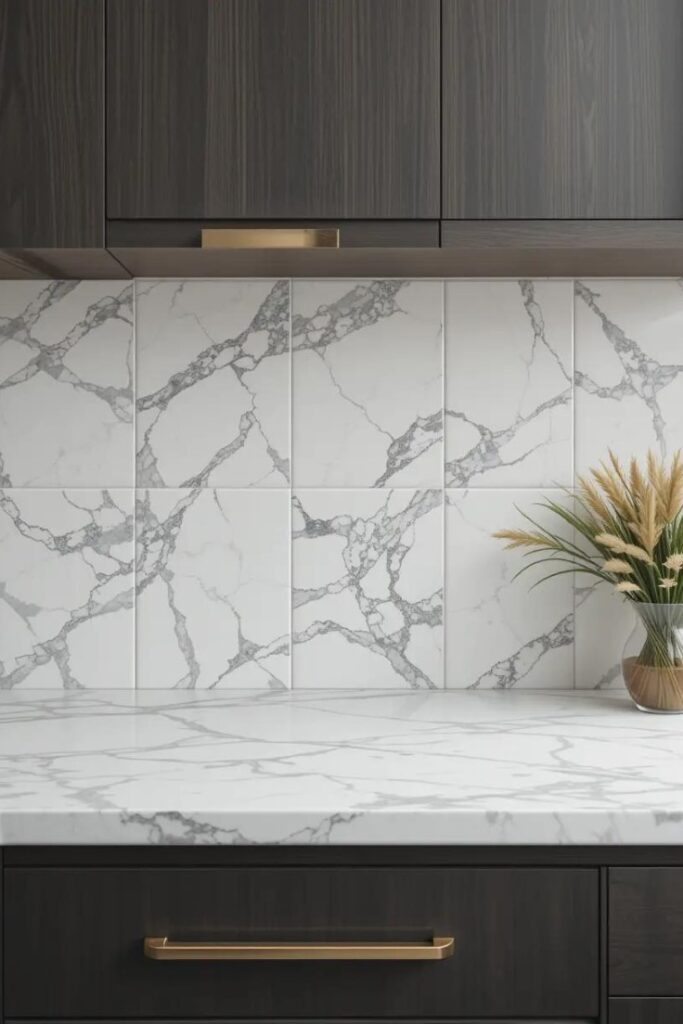
For renters or homeowners seeking a budget-friendly option, peel-and-stick backsplash tiles provide impressive versatility. These easy-to-install products come in materials ranging from vinyl to metal composite.
Modern peel-and-stick products offer surprising durability, making them an excellent temporary solution or starter kitchen backsplash until you’re ready for a permanent installation.
8. Bold Ceramic Patterns
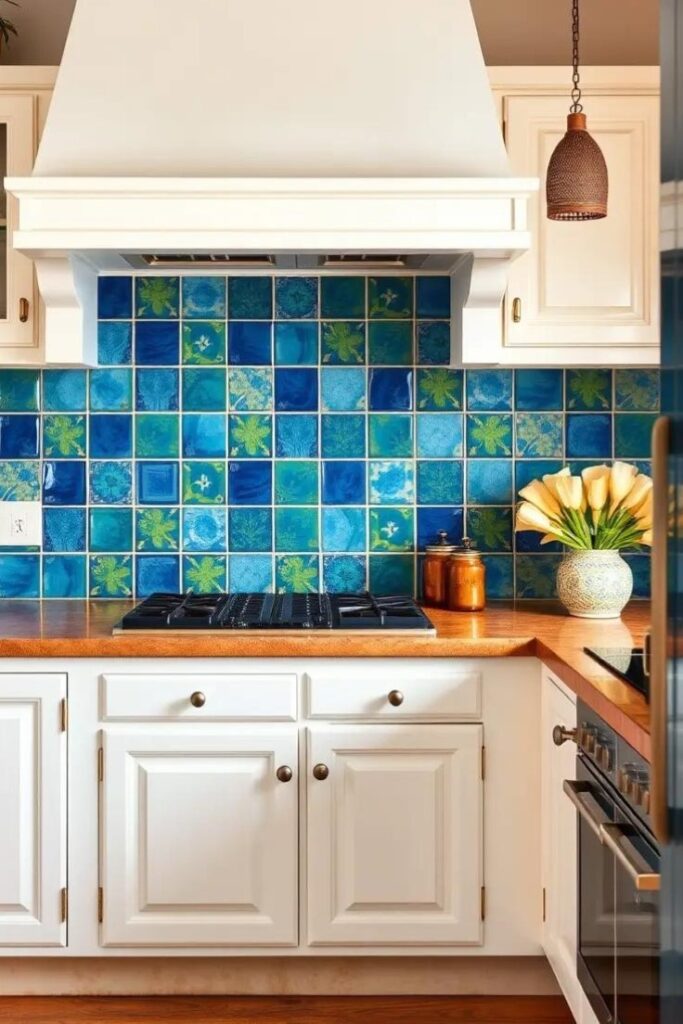
Make a statement with boldly patterned ceramic tiles for your kitchen backsplash. Inspired by Mediterranean, Moroccan, or Mexican designs, these vibrant tiles incorporate complex patterns and rich colors that become the centerpiece of your kitchen.
For maximum impact, use patterned tiles throughout your backsplash area, or create a feature section behind your range while using complementary solid colors elsewhere.
9. Vertical Orientation
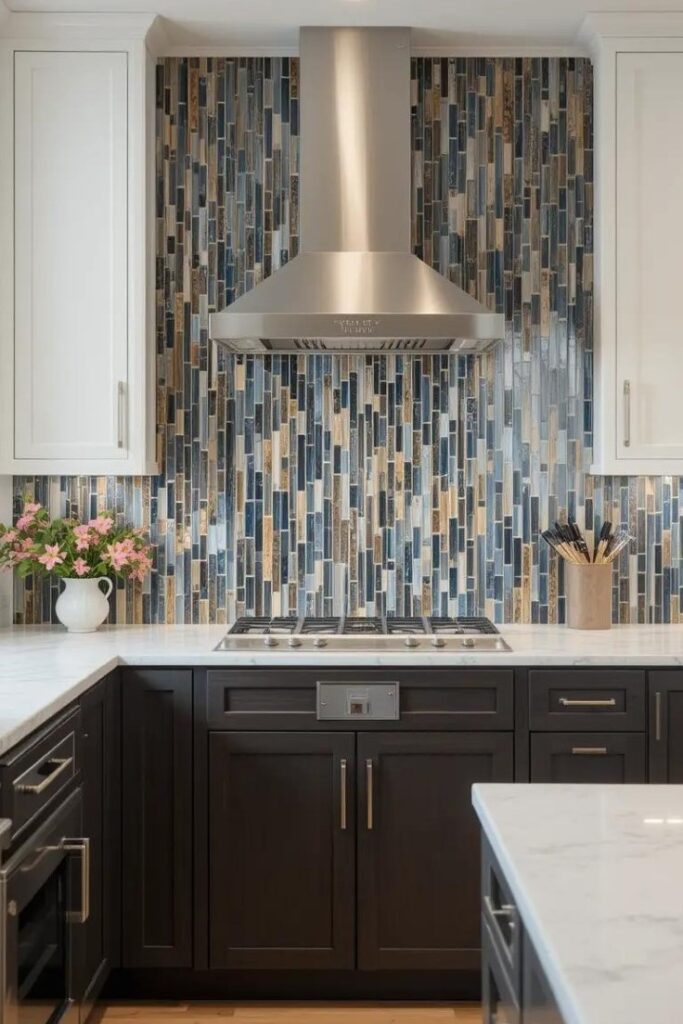
Changing the orientation of traditional tiles creates a fresh, modern kitchen backsplash. Consider installing subway tiles or rectangular tiles vertically rather than horizontally. This unexpected technique draws the eye upward, making your ceilings appear higher.
Vertical backsplash arrangements work particularly well in kitchens with limited horizontal space or where you want to create visual height.
10. Concrete Creativity
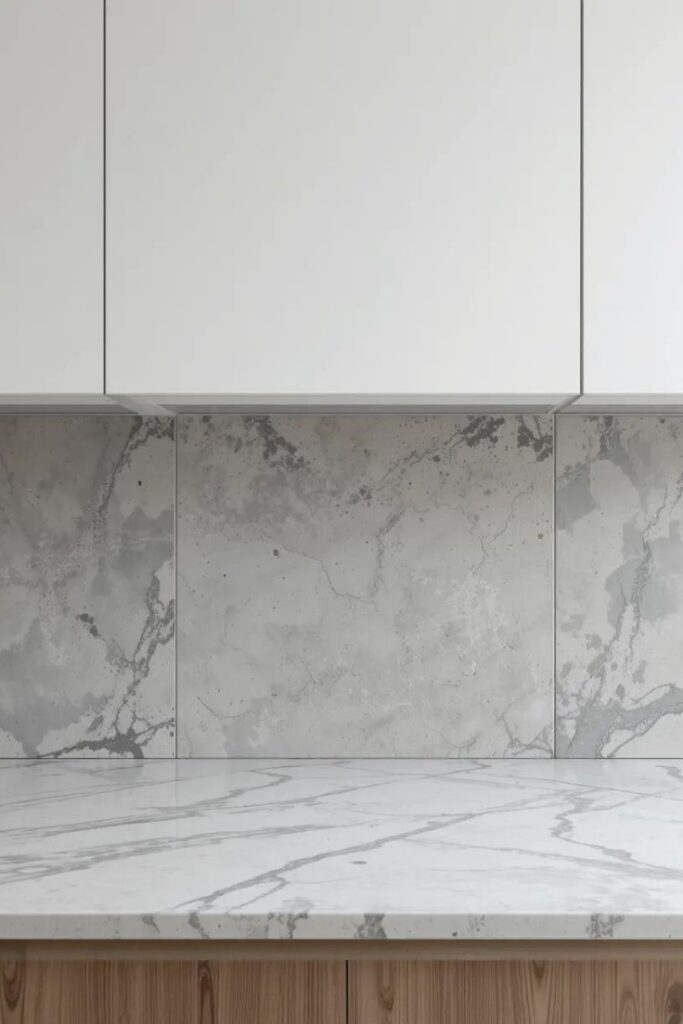
Concrete brings industrial chic to your kitchen backsplash with its organic, minimalist appearance. Available as large-format panels or tiles, concrete offers a neutral backdrop that allows other elements in your kitchen to shine.
Modern concrete finishes can be customized with pigments or sealed to different sheen levels. This versatile backsplash material pairs beautifully with wood, metal, and stone elements.
11. Penny Round Mosaics
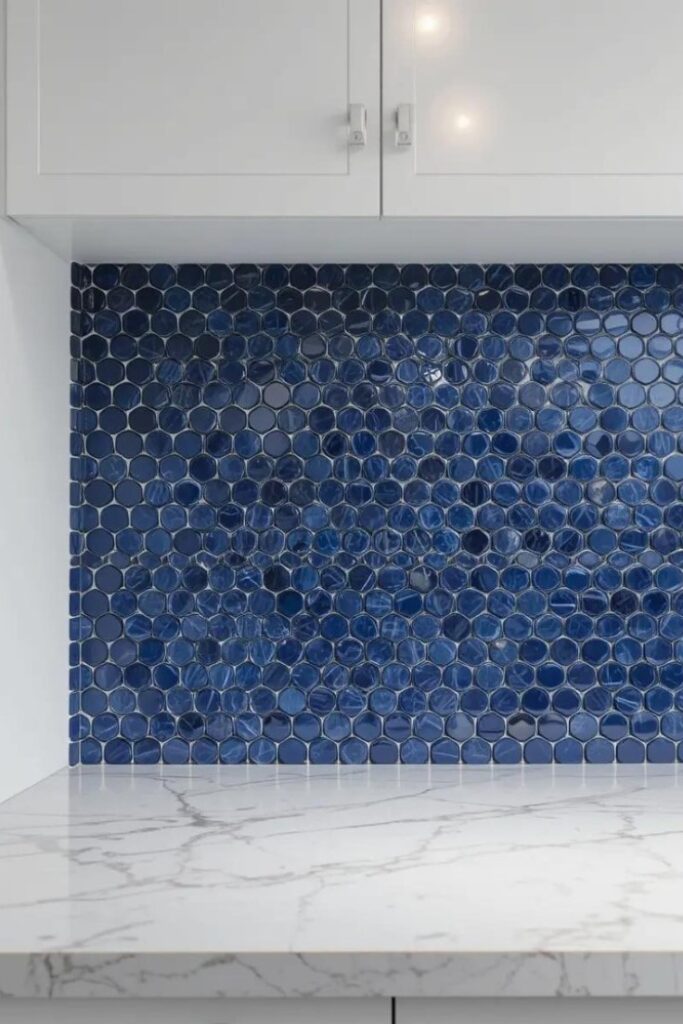
For subtle texture and visual interest, penny round mosaic tiles create a distinctive kitchen backsplash. These small circular tiles create a continuous surface with numerous grout lines, adding dimensionality.
Available in ceramic, glass, and natural stone, penny rounds work in both vintage-inspired and contemporary kitchens. This backsplash style is particularly effective when installed from countertop to ceiling.
12. Dimensional Tiles
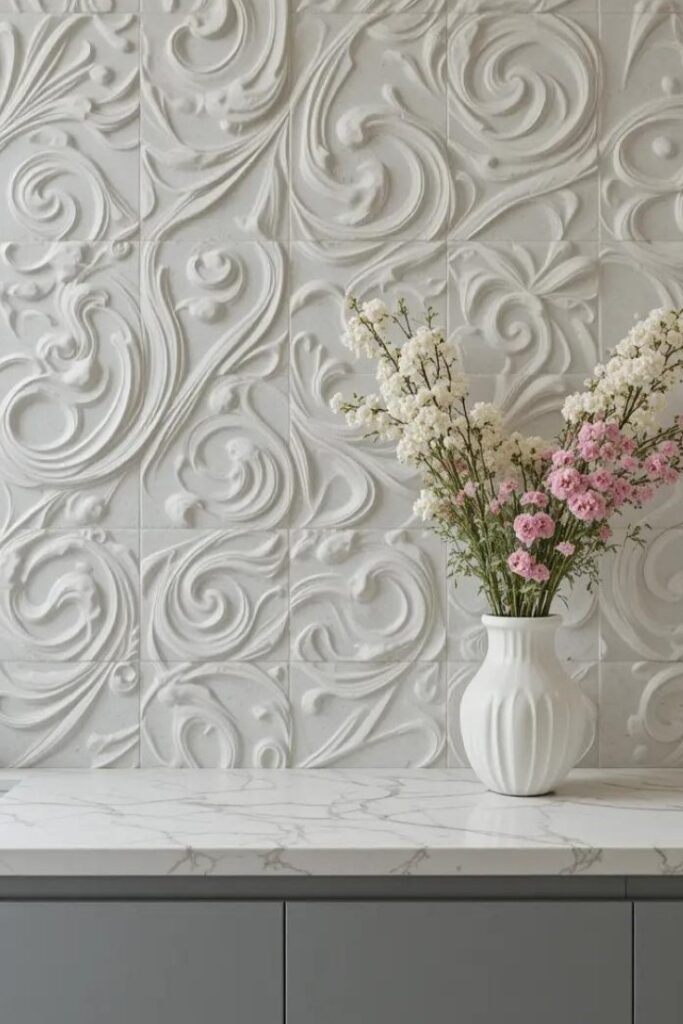
Create depth and shadow with three-dimensional tiles for your kitchen backsplash. These sculptural options feature raised patterns or geometric forms that catch light throughout the day.
For easier cleaning, consider using dimensional tiles in less splash-prone areas of your backsplash, or choose designs with subtle dimensional elements that don’t collect excessive cooking residue.
13. Porcelain Plank Tiles
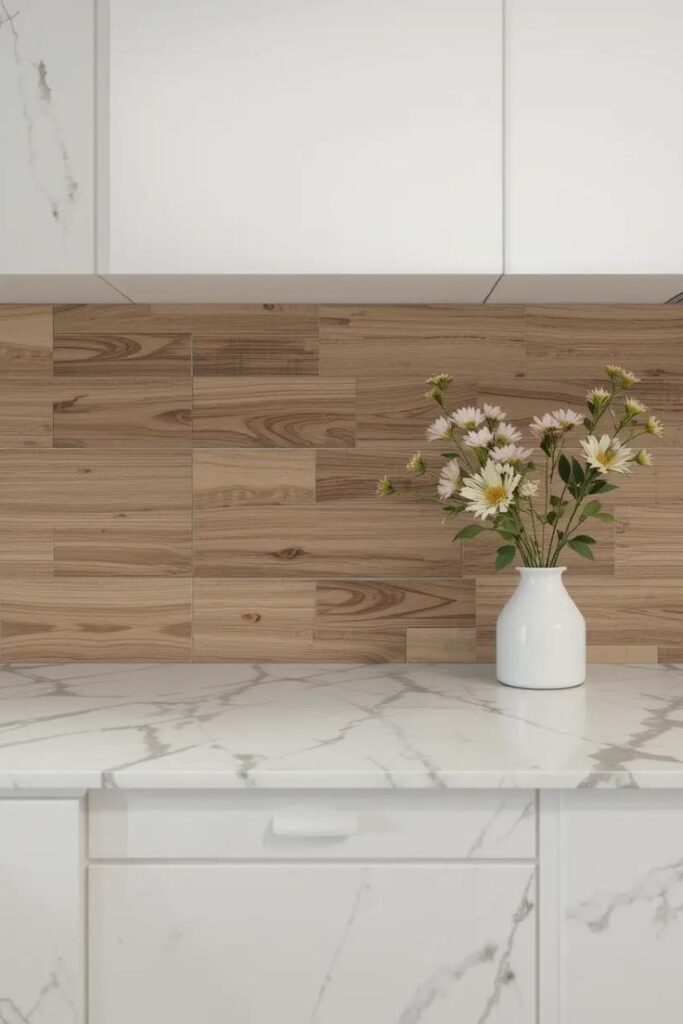
Wood-look porcelain planks bring the warmth of wood to your kitchen backsplash without the maintenance concerns. These durable tiles mimic everything from weathered barn wood to exotic hardwoods.
This backsplash option pairs particularly well with contrasting cabinet materials—think wood-look tiles with painted cabinets or vice versa.
14. Full-Height Stone
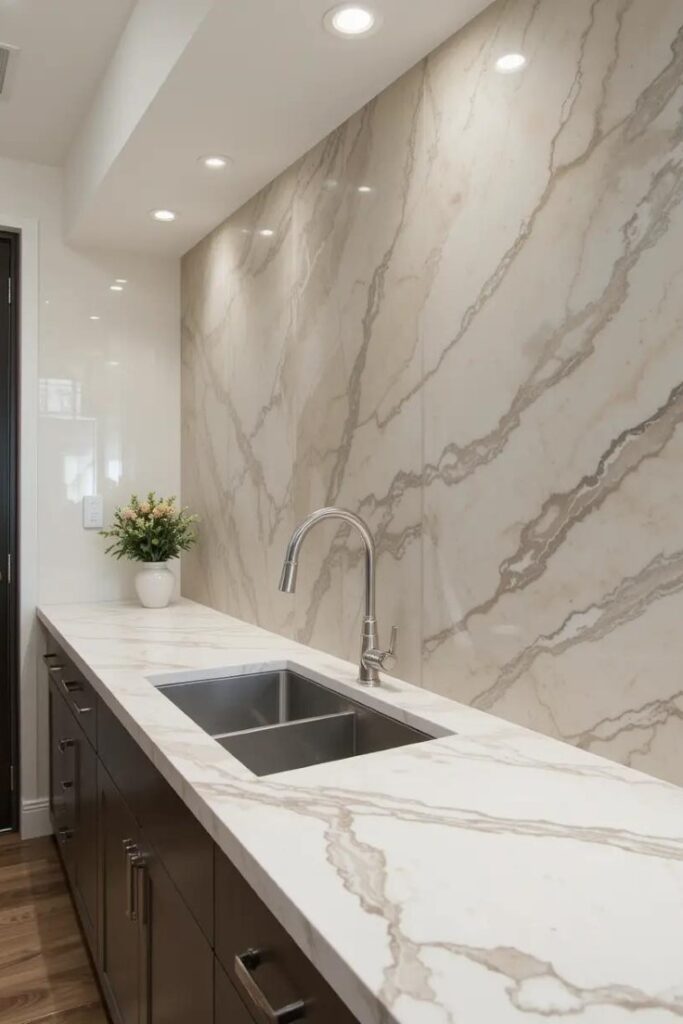
Make a dramatic statement by extending your countertop material up the wall as a full-height kitchen backsplash. Whether it’s granite, quartz, or marble, this seamless continuation creates a luxurious, cohesive look.
The absence of grout lines makes this backsplash option exceptionally easy to clean, while providing maximum durability in high-splash areas.
15. Mirrored Surfaces
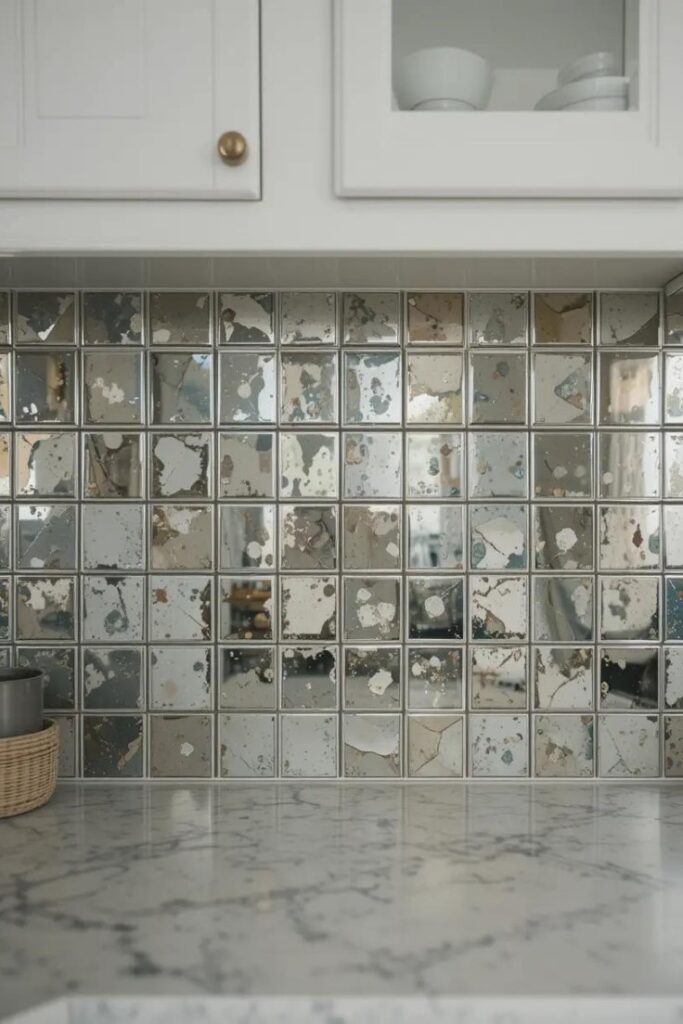
Amplify light and create the illusion of space with a mirrored kitchen backsplash. Whether you choose traditional mirrors or antiqued mirror tiles, this reflective surface brightens even the darkest kitchen corners.
Mirrored backsplashes work beautifully in smaller kitchens by visually expanding the space. Consider using them in sections rather than throughout the entire kitchen.
16. Handmade Ceramic Tiles
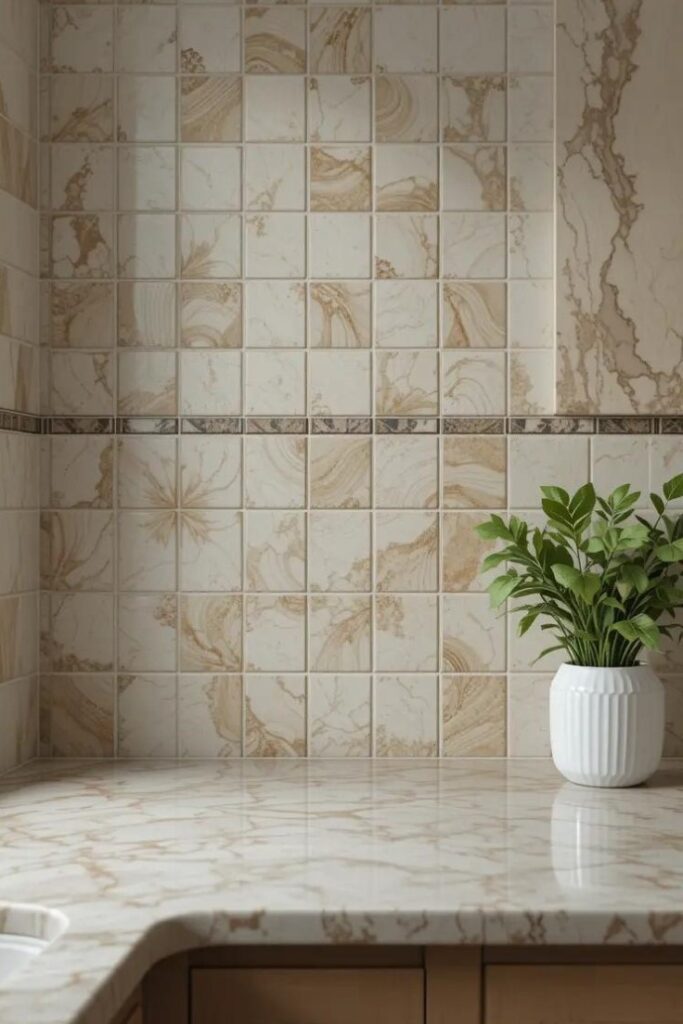
Bring artisanal quality to your kitchen backsplash with handmade ceramic tiles. The subtle variations in color, texture, and size create an authentic, handcrafted appearance that mass-produced tiles can’t replicate.
These slight variations create a distinctive, one-of-a-kind appeal for your backsplash. Their depth of color and distinctive glazes create a rich visual experience.
17. Mixed Materials
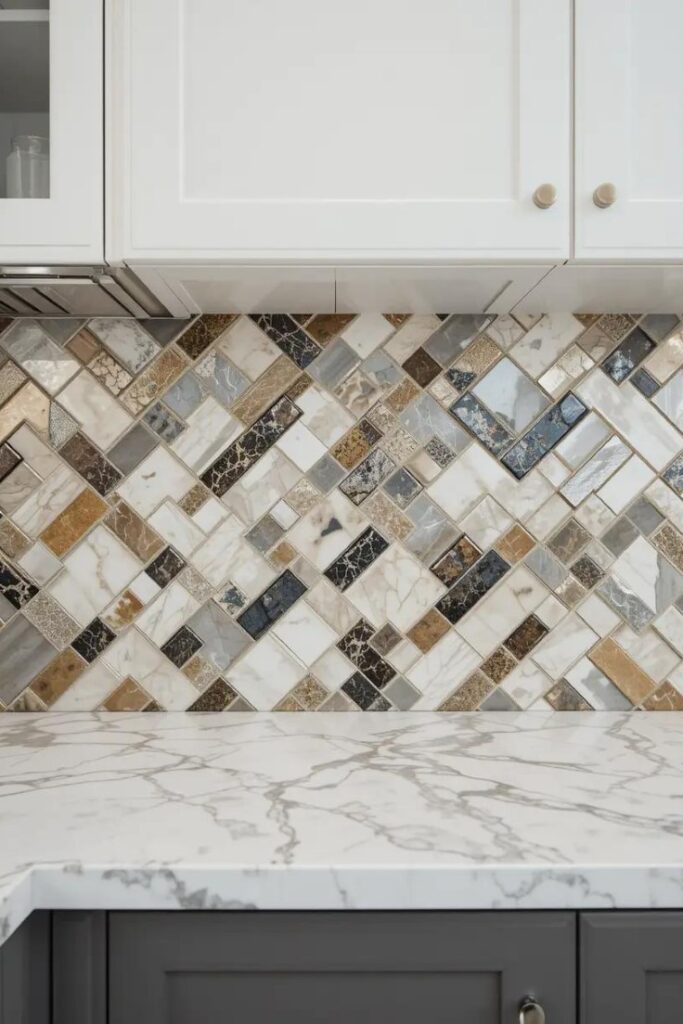
Create a truly custom look by combining multiple materials in your kitchen backsplash. Consider using different tiles in separate kitchen zones or create a feature area with accent materials.
The key to success is maintaining a cohesive color palette or theme that ties the different backsplash materials together.
18. Waterproof Wallpaper
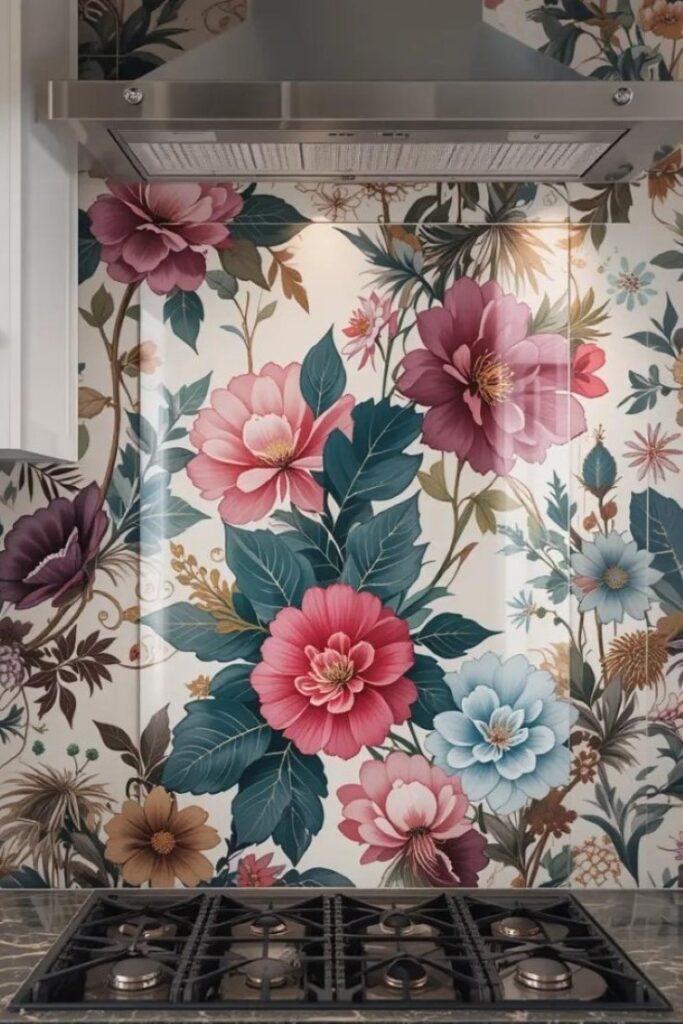
For a truly unexpected kitchen backsplash, consider specially designed waterproof wallpaper protected by clear acrylic panels. This innovative approach allows you to incorporate complex patterns that would be impossible with traditional tile.
The flat surface makes cleaning a breeze, while the limitless design options let you create a truly personalized kitchen backsplash.
Choosing the Right Kitchen Backsplash for Your Space
When selecting from these backsplash ideas, consider:
- Your kitchen’s existing elements: Choose complementary colors and styles that work with your countertops, cabinets, and flooring.
- Maintenance requirements: Consider how much time you’re willing to spend cleaning your kitchen backsplash.
- Budget constraints: Many backsplash looks can be achieved at various price points.
- Installation complexity: Some backsplash materials require professional installation, while others are DIY-friendly.
The well-chosen kitchen backsplash balances aesthetic appeal with practical considerations, creating a surface that you’ll love for years to come.


